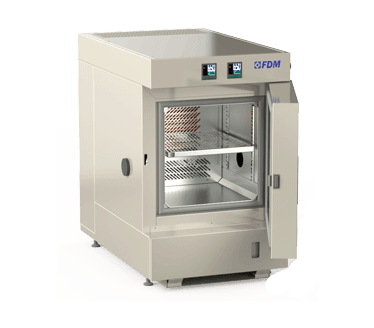
Acetone, ethanol, methanol, toluene, petroleum ether, xylene, chloroform.
What do all these substances have in common?
Well, the ability to melt other substances!
The ones we have named are the most common solvents in our society.
They are extremely useful in many fields but also have undesirable effects when they come into contact with materials they shouldn't.
To mitigate the effects of this eventuality, there is solvent resistance testing.
What is the Solvent Resistance Testing used for?
Scientifically, solvents are all those substances capable of dissolving, dispersing or diluting other substances, forming a homogeneous solution. Solvents are found in all states of matter but liquids are by far the most common.
When used intentionally, solvents play very important roles. However, precisely because of their effectiveness, we must take into account all cases in which the contact between substances is not intentional.
The solvent resistance test is used to verify the ability of a material to resist the action of different solvents.
Precisely due to the nature of solvents, almost no sector is immune from the solvent resistance test because wherever there are materials that can be attacked, the test covers its function. Paints and coatings are extensively tested against the action of solvents and this is of great importance for the automotive sector.
Less predictable is the importance that the solvent resistance test plays for electronics and the military and aerospace sector.
In fact, the electronic components of these sectors are so delicate that they are subjected to a rigorous series of tests, including that with solvents.
The major international standards governing solvent resistance testing are ISO 2812 for paints, ASTM D5402 for organic coatings, ASTM D1308 for household chemicals, and MIL-STD-810G for electronics. military use.
Perform
Climate Stress
Discover the new series of Climate Chambers for controlled climate testing
How does Solvent Resistance Testing work?
The solvent resistance test is a laboratory test that makes use of various technical instruments in order to produce precise and reliable results.
The sample of the material to be tested is placed in an isolated and controlled environment, the solution is applied and then left to act within a predetermined time frame, according to the guidelines dictated by the above standards.
In many of these tests, the temperature and relative humidity values must be known and stable. Furthermore, some procedures require a successive series of tests with different parameters of temperature and relative humidity.
And this is where climate chambers come into play.
Climatic Chambers and Solvent Resistance Testing
Product and material tests, including resistance to solvents, must simulate as precisely as possible the actual conditions that the product or material will encounter.
For this reason, even the solvent resistance tests are carried out under precise environmental conditions, i.e. temperature and relative humidity parameters which alter the action of the solvent itself.
Climatic chambers are therefore necessary as laboratory instruments in which it is possible to alter the temperature and relative humidity parameters as desired in order to simulate real conditions in the most accurate way.
For example, the aforementioned MIL-STD-810G provides for a procedure in which one group of samples is kept at a temperature of 25° and another group between 63° and 70°.
You cannot find the ideal chamber for your test?
Create your own environment, according to any test requirement
The FDM Climatic Chamber for Solvent Resistance Testing
FDM climatic chambers are able to meet all environmental requirements that come into play in solvent resistance tests.
We offer different models of climatic chambers with size and distribution of space designed to accommodate various types of samples. Furthermore, our rooms can be customized to meet customer needs, even with the addition of protections for the chamber against the action of the solvents themselves.
For further doubts and questions, please do not hesitate to contact us.
Would you like to receive a quote or do you have questions about the product?
Contact us to receive more information about this Product.



